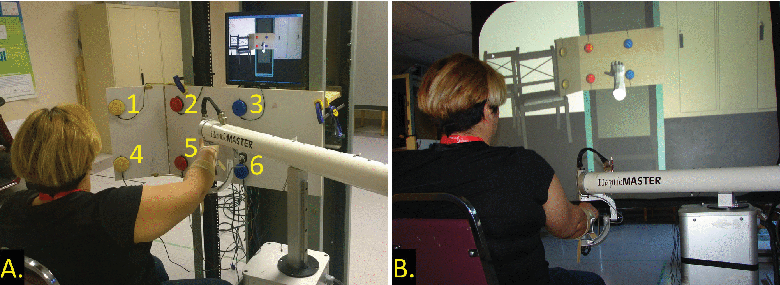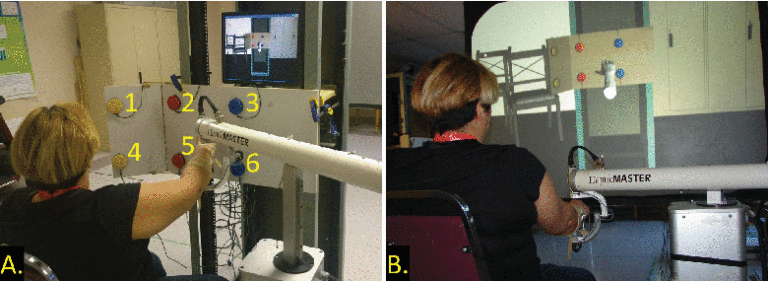
The aim of the current study was to examine the role of environment, whether virtual or physical, on robot-assisted reaching movements in chronic stroke and healthy individuals, within a single session. Twenty-three subjects participated in the current study divided into three groups: nine chronic stroke individuals able to perform a reaching task with no need for the robot assistance, nine chronic stroke individuals who needed robot assistance to complete the reaching task, and five healthy individuals. The task was to reach six target buttons in two identical physical and virtual environments. The outcomes consisted of specific kinematic measures (amount of movement completion without robot assistance, mean speed, peak speed, straightness, and shakiness) and a custom questionnaire to assess how the stroke subjects perceived and experienced the reaching task in both environments. The results showed no differences between the two environments in terms of the outcome measures in any of the groups. Our findings suggest that the choice of environment, whether physical or virtual, is not a key factor in designing a simple robot-assisted reaching task for stroke survivors. Further studies are required for more complex environments and tasks as well as robot-assisted training protocols.

